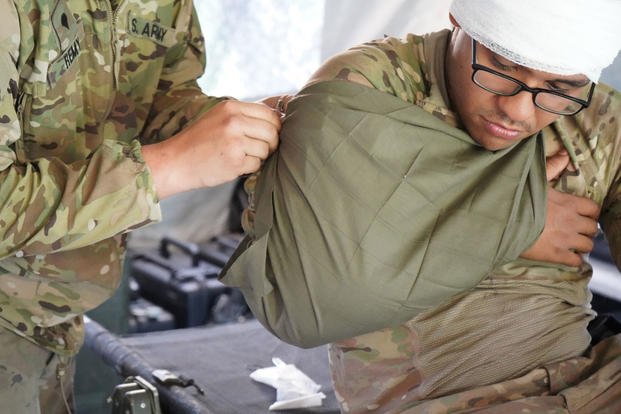Imagine a bandage that can tell whether a wound is healing properly, adjust itself to fight infection and electronically stimulate the body to speed up healing. It could also communicate with medical staff, who would adjust the device as necessary to heal wounds in less time and with less pain than traditional dressings.
No, this isn't science fiction. It is a new "cyber-bandage" developed by researchers at the Department of Veterans Affairs.
While it may be years until the technology is available for general use, it shows great promise for treating stubborn, hard-to-heal wounds, especially pressure and blast injuries.
Pressure injuries, also known as pressure ulcers, are chronic wounds that are extremely difficult to heal and often affect those who are bedridden or have limited mobility and are confined to a wheelchair. The annual cost to treat these types of wounds in the U.S. is nearly $10 billion, according to the Agency for Healthcare Research and Quality.
Blast injuries, which veterans suffer far more often than civilians, are much more difficult to heal than normal puncture wounds or lacerations. This is because the area of damage is greater and the tissue damage is more severe.
"As a normal wound heals, there is a lot of biological activity," explained Dr. Kath Bogie, who works with the VA Advanced Platform Technology Center in Cleveland and is one of the main developers of the bandage. "The cells start to proliferate, and the wound begins to heal and close up. A chronic wound gets stuck and doesn't go on to heal. The general thinking is that electrical stimulation provides the energy to promote healing in a chronic wound."
Using Electricity to Heal
From the first medical experiments with electricity by Luigi Galvani in the late 1700s, scientists and physicians have studied the body's reaction to electric current.
Employing electrical stimulation to treat wounds and heal muscle pain has been used for years. You may have used a Transcutaneous Electrical Nerve Stimulation, or TENS, device sold by a famous ex-basketball player to help soothe back and muscle pain. Until recently however, technology didn't exist that would allow the electronic stimulation device to be incorporated into a bandage that need not be removed every time electronic stimulation is applied.
Chronic wounds are also full of bacteria that may form a thin film layer over the injury, which delays healing. Preliminary data suggest that using electrical stimulation can disrupt the biofilm, minimize infection, and promote the growth of new blood vessels, according to Bogie.
Along with electronic stimulation, the bandage can monitor the wound's temperature and the electrical resistance across the wound. This is important because the wound won't heal properly if it is too cool; if it is too warm, that may be a sign of infection. Electrical resistance measures the moisture of the wound. Wounds heal better if they remain warm, moist and sterile.
All of the electronics are contained in the top layer of the bandage, which can be separated from the absorbent fabric underneath. The top layer can then be reused several times, being placed over the absorbent gauze -- which can remain as long as seven days between dressing changes.
Add to all this electronic wizardry a communication interface that will allow a patient to upload the data from the bandage to their care team via the internet. A patient's care team can view the results and adjust the electronic therapy as necessary to speed healing.
The VA wants to patent and roll out the technology as soon as possible; however, development is currently on hold as a result of the COVID-19 crisis.
Stay on Top of Your Military Benefits
Not sure what your veteran health care benefits are? Keep up with all the changes and details. Subscribe to Military.com. and get all the latest updates straight to your inbox.











